Based in
Australia
Photographed in
Ukraine
She walked through the house in the darkness. As she was in one of the bedrooms, Tamara lit a torch. “When Russians were shelling our village, the shrapnels and debris damaged the walls and roof of my home. I was sheltering in the basement for 21 days with five family members. I was afraid.” As she went into the living room, opened the curtain, and filled the room with sunlight, the torch was still trying to enlighten the house.
On February 24, 2022, Russian troops were ordered to mount a full-scale invasion of Ukraine; a new stage of the Ukrainian war had started. According to the UNHCR, the war has created a fast-rising exodus displacing more than a quarter of Ukraine’s population. Six million people fled Ukraine, while eight million people are internally displaced. People who decided to stay close to their houses, or what is left of them, sheltered in metro station tunnels like Kharkiv, the second-largest city in Northeast Ukraine. At the edge of Saltivka, one of the most shelled suburbs in the North of Kharkiv, 270 people were sheltering for over two months, only two kilometres away from a Russian position. Many people show post-traumatic stress disorder as they roam through the humid tunnels. They were used to not seeing the sunlight, which is the price to pay to stay alive.
The United Nations released a report on May 12, stating that the civilians killed from February 24 are now over 3500 and over 3000 injured. They have been unable to assess many areas of Eastern Ukraine yet.
This photo series takes the viewer through the destruction of Chernihiv, North Ukraine, and its historical Hotel Ukraine. The ruins of Eastern Europe’s largest markets in Kharkiv, North-East Ukraine, people surviving in metro tunnels, and the re-burial of Lyubov Shevchenko, who was killed during the second day of the war, as Russian forces heavily bombarded her village. Moreover, it shows a family returning to their home for the first time after the invasion started.

Tamara Lysytsya, 67, stands inside her damaged house in Novoselivka, on April 24, 2022, in Chernihiv, Ukraine. Since the Russians started shelling her village on March 5, Tamara doesn’t have electricity, water, and gas; her house has damage caused by close-by explosions. She is currently living with her son; they sheltered together in the basement under her house and five other family members for 21 days.
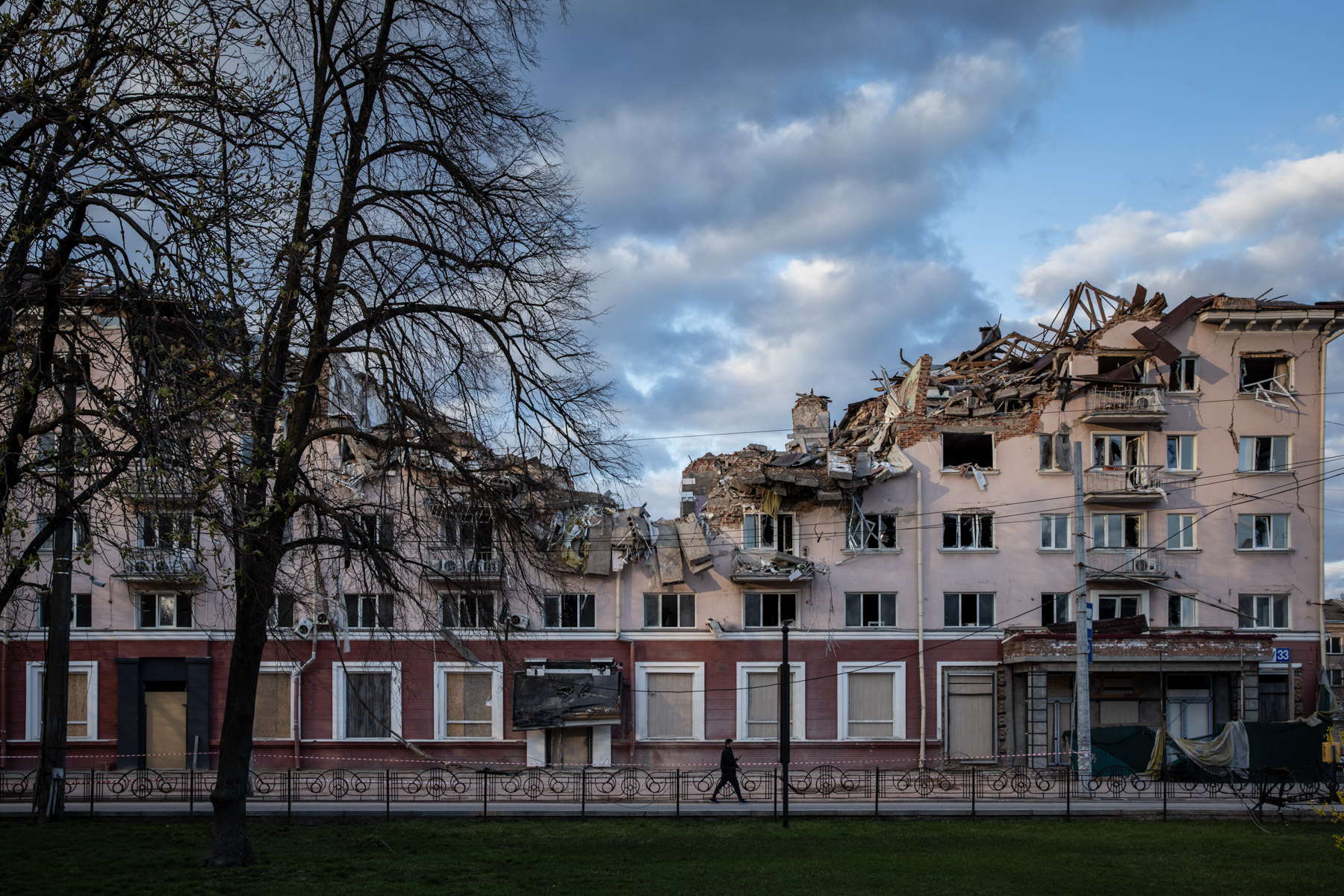
The rubble of the Hotel Ukraine in the city centre of Chernihiv, on April 24, 2022, in Chernihiv, Ukraine. It was destroyed by Russian shelling on March 12. Chernihiv is a city with a population of 280.000 people; it is to the northeast of Kyiv, about 70km from the Russian border, and even closer to Belarus. Russian forces reached the city and encircled it soon after the invasion began on February 24, until Moscow decided to withdraw the troops on April 4. Alongside Sumy and Kharkiv, Chernihiv is a city that the Kremlin aimed to conquer for a greater success of their northern war campaign. Entire villages were destroyed, often with people living in or hiding in basements. According to Chernihiv’s Mayor Vladyslav Atroshenko, approximately 700 people died from the bombardments.
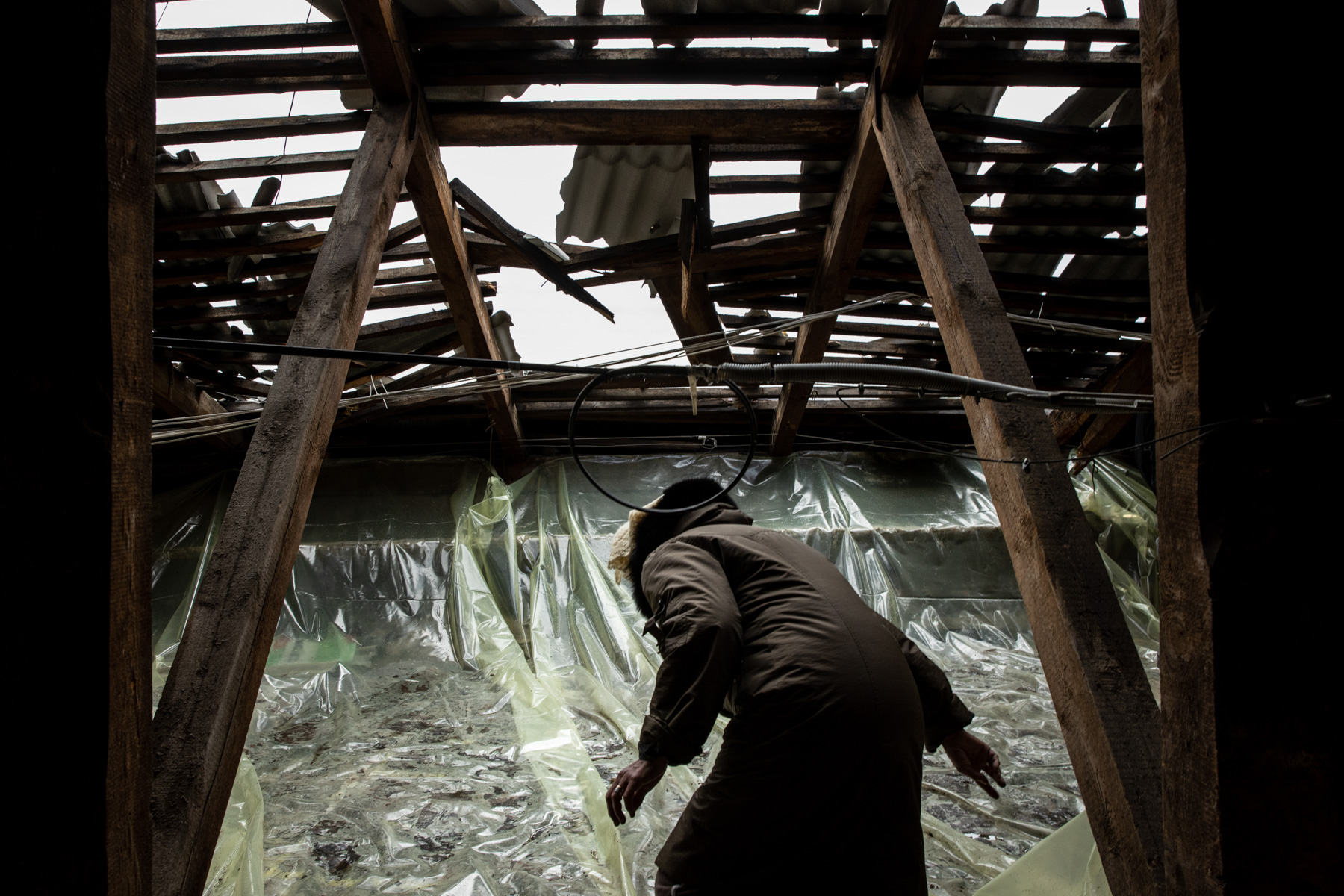
Ludmilla lowers her figure to go through wires as she walks through the roof of the building where she lives that was blown out by an explosion’s shock wave, on April 27, 2022, in Chernihiv, Ukraine. Ludmilla said: “This building was built before the Russian Revolution, stood for three wars, the shock wave of an explosion destroyed the roof during the siege of Chernihiv.”

People shelter in the Saltivka metro station tunnel, on April 30, 2022, in Kharkiv. Since the war started, over 600 people were sheltering in this metro tunnel; two months after the Russian invasion, 270 people were still there. The conditions were precarious, with no fresh air, no sunlight, with a few toilets without showers. Most of the people were on the catwalk and the stairs; others were inside a wagon on the platform. Many show post-traumatic stress disorder as they roam through the humid tunnels.
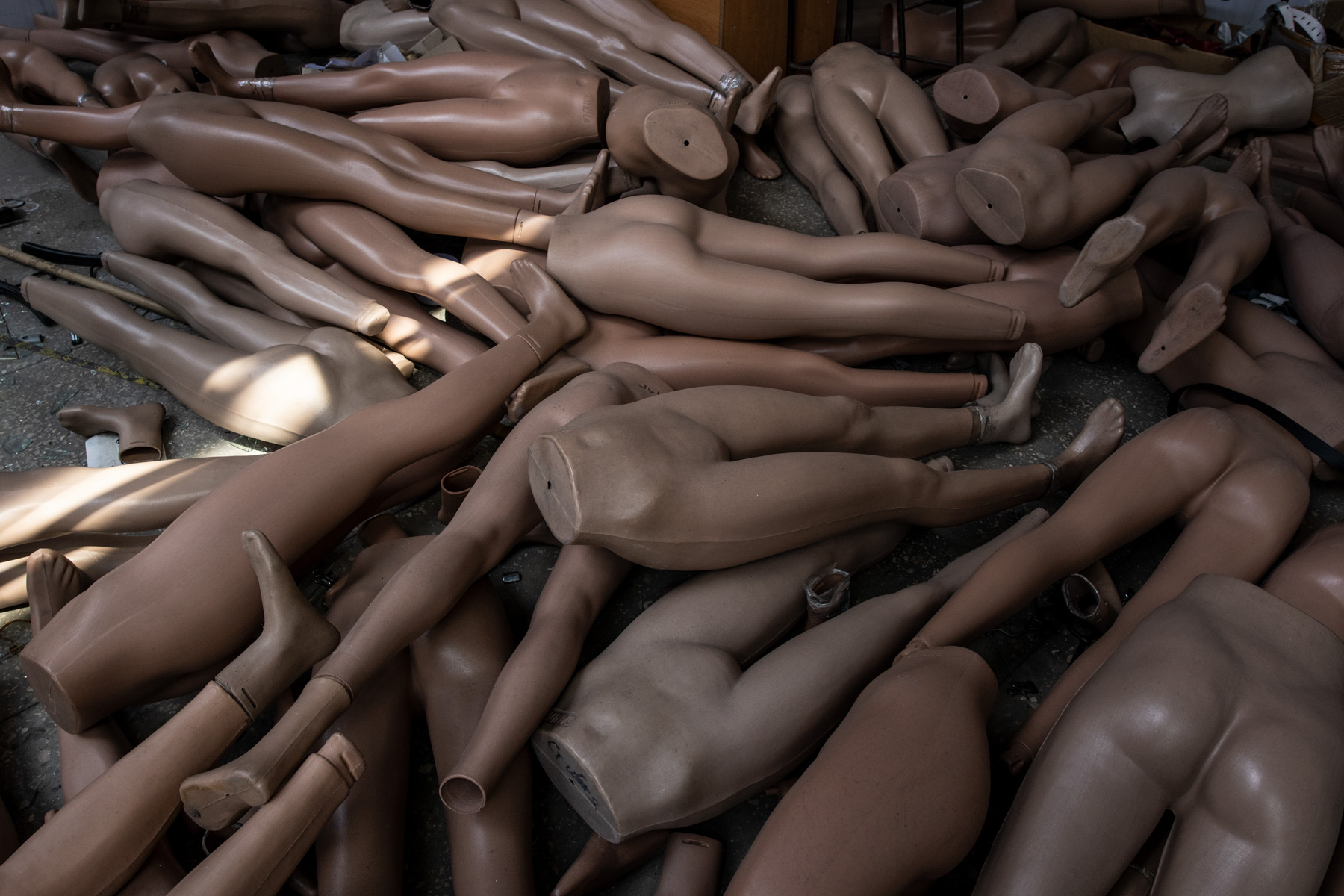
Mannequins lay on the floor of a destroyed shop at Barabashovo Market in the suburb of Saltvika, on April 30, 2022, in Kharkiv. The Barabashovo Market was the largest in eastern Europe, with around 15.000 shops; it was hit by Russian shelling on March 18.

Katerina Yuschenko, 72, lies on a bed in the 2nd Municipal Hospital of Chernihiv as her daughter Olena looks after her, on April 25, 2022, in Chernihiv, Ukraine. Katerina was wounded by Russian shelling as she was queueing to buy some bread. Katerina lost her left leg and two fingers of her left hand, but surgeons saved her right leg. She was among dead people when her daughter Olena found her. “I could not believe my mother was still alive,” Olena said.
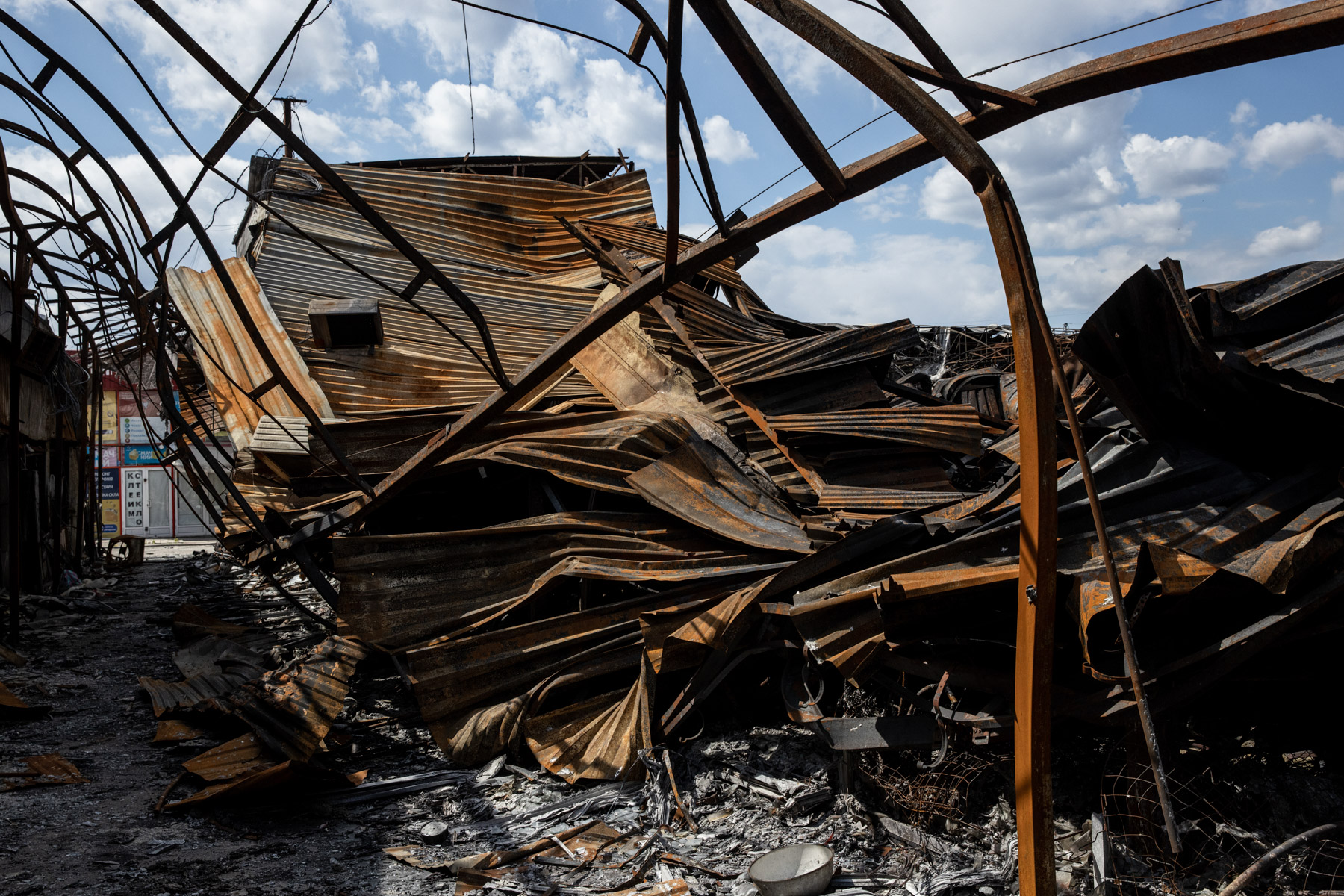
Rubble of a shop at Barabashovo Market in the suburb of Saltvika, on April 30, 2022, in Kharkiv. Saltvika is a high-density residential area located in the northeastern region of Kharkiv in eastern Ukraine. Since the Russian invasion started, Saltivka, was one of the most shelled suburbs, the first Russian position was only two kilometres away.
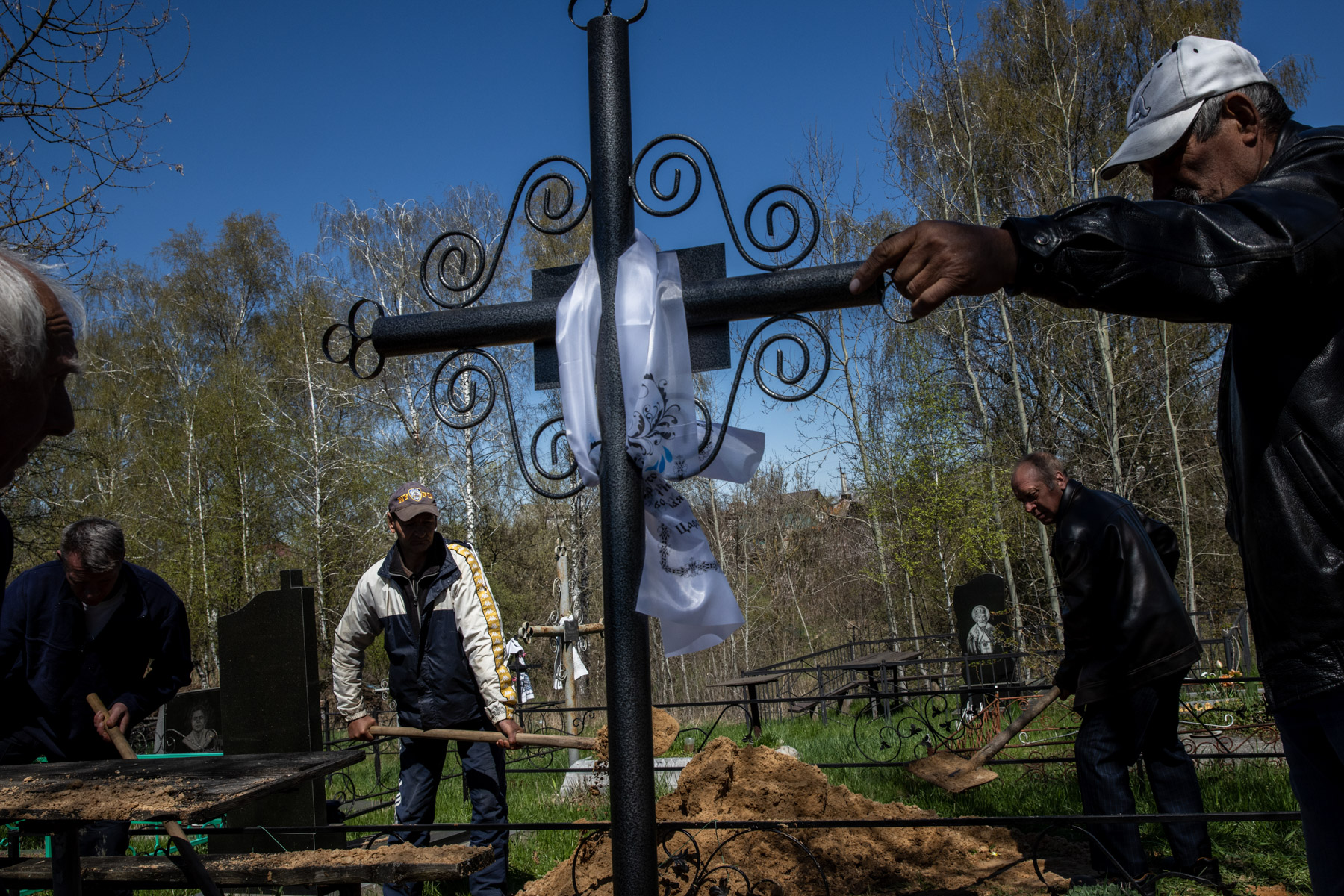
Tearasovich and other gravediggers bury Lyiubov Medved, 60, who died February 26, as Russians were shelling the village of Kyinka, on April 28, in Chernihiv, Ukraine. Lyiubov was buried in a cemetery space created during the Russian aggression. According to her husband’s will, she was re-buried in the cemetery of her village, Kyinka.
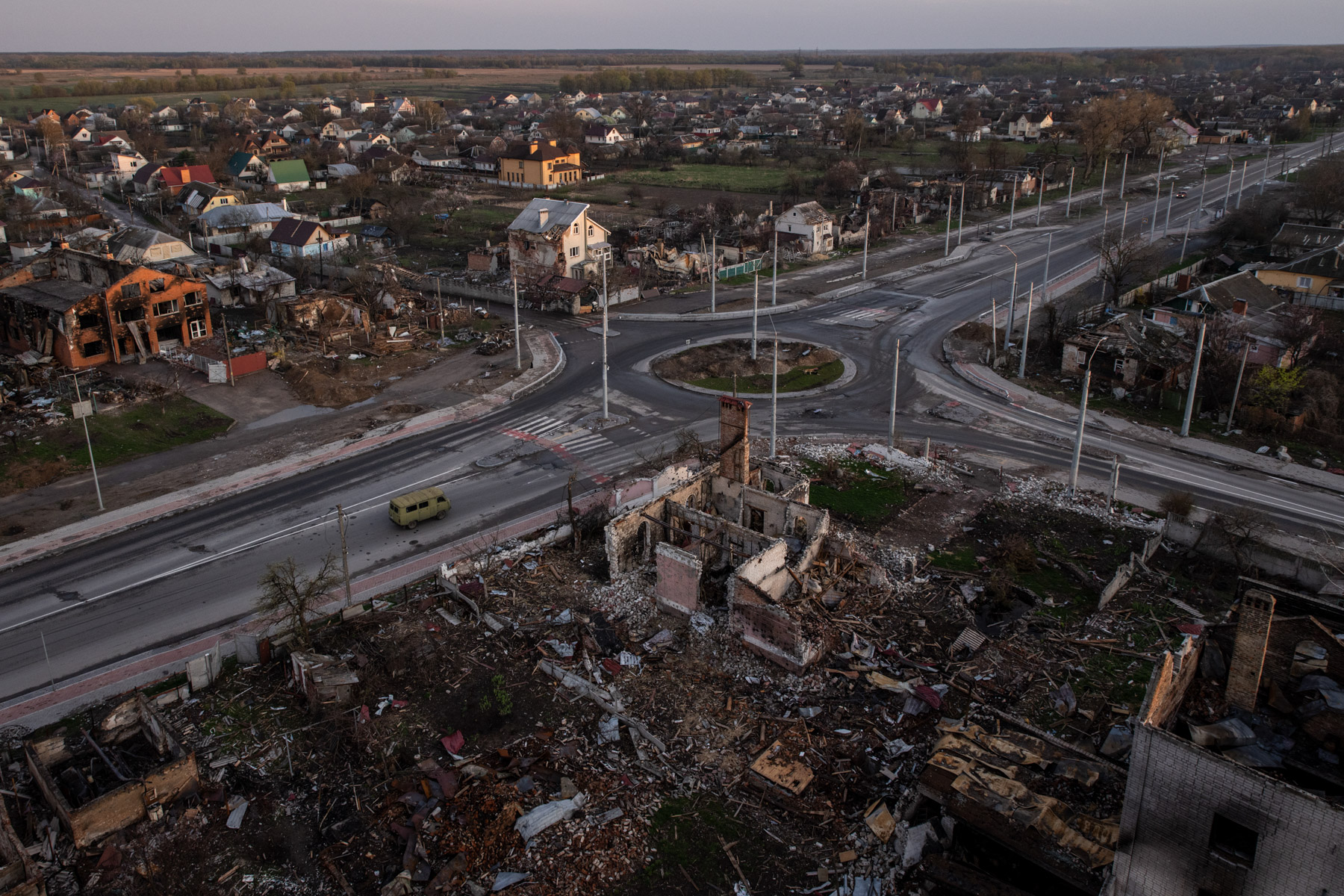
Destroyed houses are seen along Shevhenka Street on the outskirts of Chernihiv, on April 25, 2022, in Chernihiv, Ukraine.
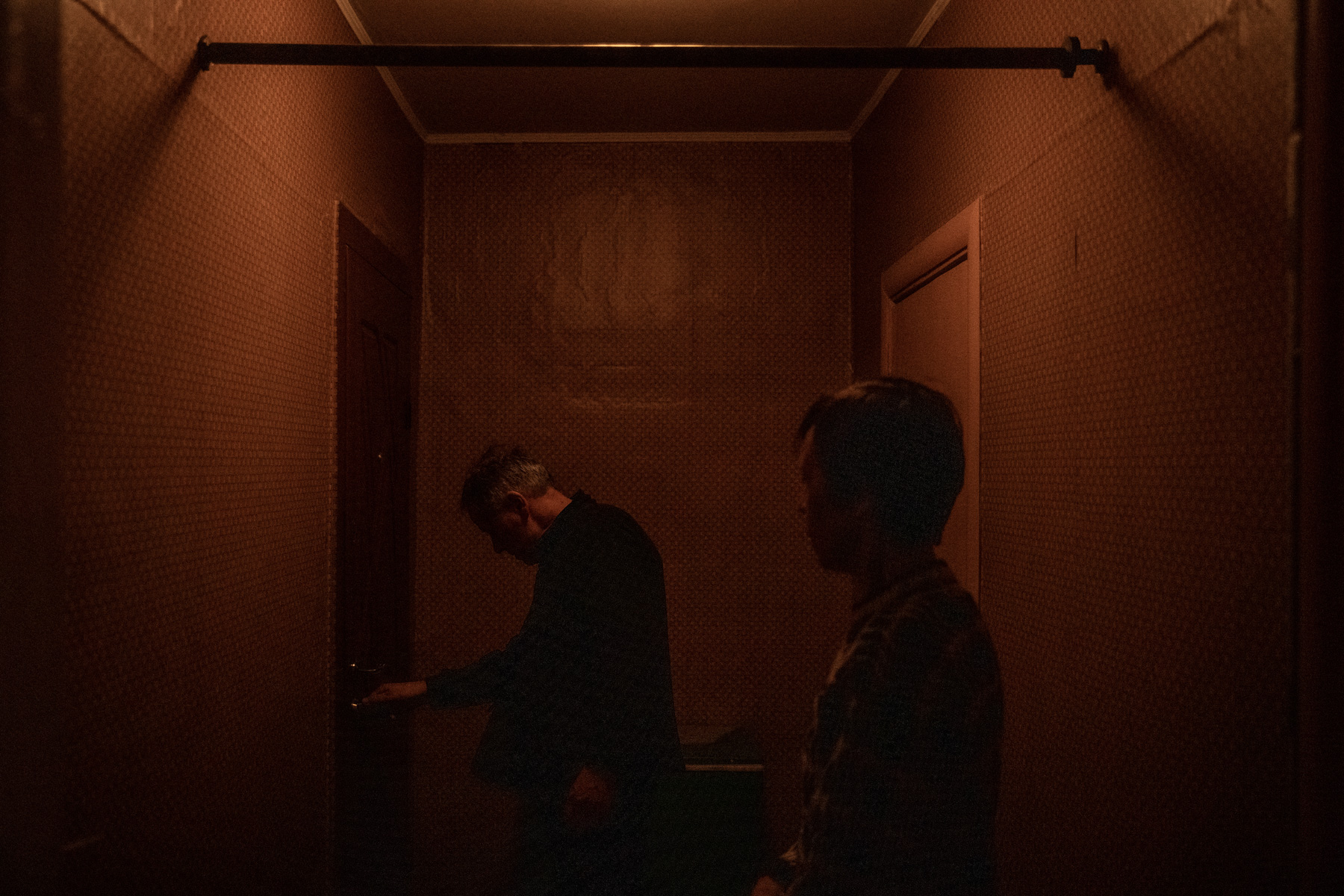
(R) Valentina Grygoryuna Kolenysnik and her husband returned to their house for the first time to assess the damage, on April 25, 2022, in Chernihiv, Ukraine. Valentina and her husband were sheltering in the garage as Russians started heavy shelling Chernihiv. The walls began to shake, so they decided to flee to a village south of Chernihiv, where her parents live. They haven’t been to their home for two months.
